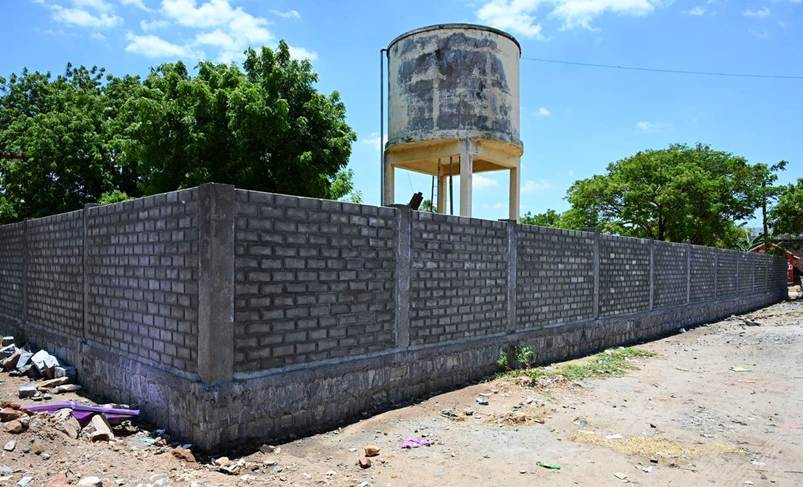Background of the Incident
- Location: Muthulapatti village, Karur district, Tamil Nadu.
- Structure: 200 feet long, 10 feet high concrete wall, separating two communities — Thottia Naickers and Arunthathiyars.
- Duration: Wall existed for nearly 3 weeks before demolition on August 9, 2025.
- Key Trigger: Dispute over access to shared public facilities and discrimination claims.
Relevance : GS 1(Society) , GS 2(Social Issues)

Communities Involved
- Thottia Naickers:
- Traditionally an intermediate caste with warrior and leadership history.
- Politically influential, dominant in parts of western and central Tamil Nadu.
- Often in control of local power structures.
- Arunthathiyars:
- Scheduled Caste, historically at the bottom of the caste hierarchy.
- Socially and economically marginalized; victims of historical discrimination and segregation.
- Faced denial of access to public spaces and facilities.
Nature of the Wall
- Claim by Builders: A barrier to prevent “outsiders” from loitering, drinking, and causing nuisance.
- Reality as Per Affected Side: A “wall of untouchability” aimed at physical segregation and denial of public rights.
- Impact: Restricted movement, exacerbated caste-based tensions, and denied symbolic equality.
Legal and Administrative Context
- Land Ownership: Wall was on poramboke (public) land.
- Violation: No government permission or building plan approval obtained.
- Action Taken:
- Tamil Nadu Untouchability Eradication Front condemned wall; official meetings failed to resolve issue.
- On August 7, eviction notice issued citing encroachment on public property.
- August 9: Police, revenue officials, and heavy machinery removed the wall under protection.
Constitutional & Legal Dimensions
- Fundamental Rights Violated:
- Article 14: Equality before law — discriminatory segregation violates this.
- Article 15(2): Prohibition of discrimination in access to public spaces.
- Article 17: Abolition of untouchability — wall represents a physical manifestation of untouchability.
- Article 21: Right to dignity and free movement.
- Statutory Provisions:
- Protection of Civil Rights Act, 1955 — criminalizes the practice of untouchability.
- SC/ST (Prevention of Atrocities) Act, 1989 — addresses intentional acts of social exclusion.
- Directive Principles:
- Article 46: Promotion of educational and economic interests of SC/STs and protection from social injustice.
Governance & Administrative Challenges
- Delayed Action: Multiple failed meetings before enforcement, showing administrative reluctance to confront dominant caste groups.
- Police’s Balancing Act: Maintaining law and order while addressing deep-seated caste tensions.
- Symbolic Sensitivity: Demolition was advised not to be celebrated to avoid inflaming tensions.
Broader Socio-Political Analysis
- Caste Segregation in Rural India:
- Not an isolated case; similar “caste walls” and physical barriers exist across India.
- Reflects spatial apartheid in rural settlements (Dalit hamlets physically separated).
- Power Imbalance:
- Intermediate castes, though not at the top of the hierarchy, exercise strong local control over land, resources, and institutions.
- Marginalized castes often dependent on them for livelihoods, deepening vulnerability.
- Cultural & Ritual Exclusion:
- Arunthathiyars’ requests to participate in village cultural events repeatedly denied, further entrenching symbolic inequality.
Lessons & Policy Recommendations
- Proactive Enforcement:
- Quick administrative intervention in caste-based barriers to prevent escalation.
- Mandatory annual social audit of public spaces to ensure inclusivity.
- Awareness & Education:
- Social reform campaigns at grassroots level through schools, SHGs, and panchayats.
- Empowering Marginalized Castes:
- Strengthen SC/ST grievance redressal mechanisms at district level.
- Promote Dalit representation in local governance.
- Judicial Precedent:
- Courts should expedite hearings on physical segregation cases and impose exemplary costs on violators.



